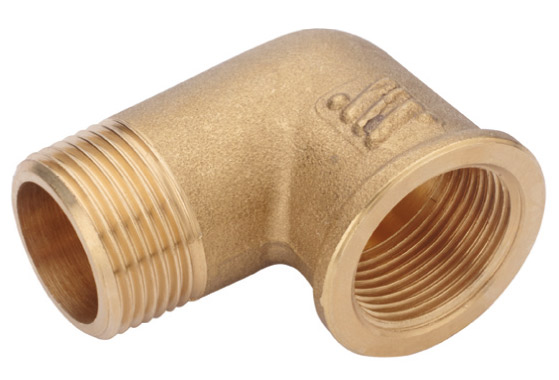Galvanic covering for brass fittings
Chrome- or nickel-plated, brass fittings, both generic and for multilayer pipe, withstand the corrosion of the environment better.

We have seen some of the technical aspects of brass fittings, especially those that relate to stress corrosion cracking, which depends on the material use and on the method of cooling down the material after the hot pressing processing. We have likewise seen the potential influence the sealing method has on the fitting breaks: in case use is made of the wrong material, high voltages that damage the fitting might be triggered off.
When we speak of brass fittings, however, we are also referring to their resistance and their superficial aesthetics. It is here that a role is played by the various versions available both for generic and for multilayer fittings; in the catalogue, we may in fact come across the possibility of ordering fittings with a different surface finish, ranging from bare brass to nickel or chrome plating.
The latter two modes of processing brass fittings facilitate resistance in diverse environments and benefit aesthetics on top of that. The chromium and nickel plating improves the aesthetic image of the fitting, which over time, had it been made of brass, would tend to oxidize.
The covering of brass fittings likewise increases surface hardness and makes the product more resistant to the environment, including at high levels of humidity. The type of galvanic covering also depends on the standards in force in the various countries in which it may be used.
When we speak of brass fittings, however, we are also referring to their resistance and their superficial aesthetics. It is here that a role is played by the various versions available both for generic and for multilayer fittings; in the catalogue, we may in fact come across the possibility of ordering fittings with a different surface finish, ranging from bare brass to nickel or chrome plating.
The latter two modes of processing brass fittings facilitate resistance in diverse environments and benefit aesthetics on top of that. The chromium and nickel plating improves the aesthetic image of the fitting, which over time, had it been made of brass, would tend to oxidize.
The covering of brass fittings likewise increases surface hardness and makes the product more resistant to the environment, including at high levels of humidity. The type of galvanic covering also depends on the standards in force in the various countries in which it may be used.
11/08/2016
I contenuti di questo sito non hanno carattere di periodicità e non rappresentano 'prodotto editoriale'.








